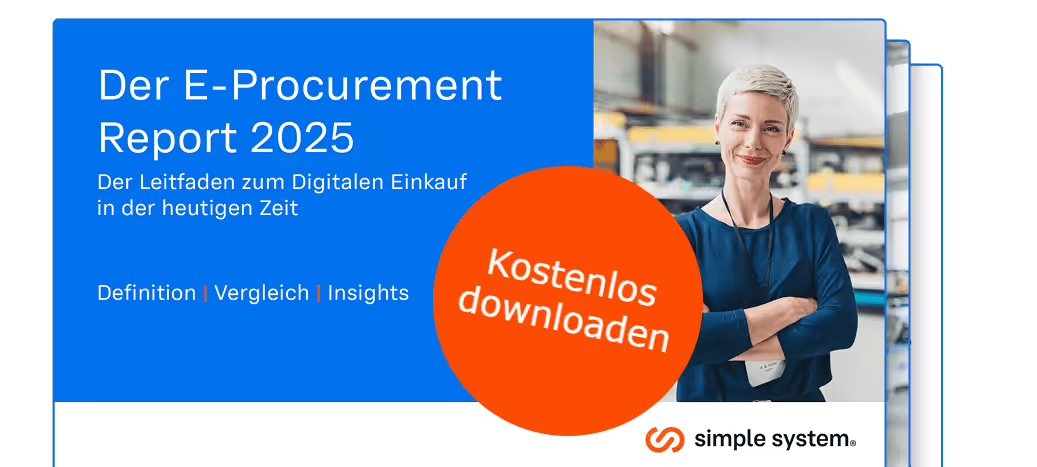C-parts supplier: optimize C-parts management and processes
A reliable C-parts supplier is crucial for a smooth supply with important small parts in high procurement volumes within the company. The selection of suitable suppliers ensures that the required parts are always available and that production processes run without interruptions. Through optimized procurement, companies can Save time and costs sustainably and exploit the full potential of logistics.
C-parts: What they are and why they're important
C-parts are materials frequently required in companies but characterized by a low individual value. They make up a large portion of procurement volume but are less strategically significant than A-parts or B-parts. Despite their low value, they are crucial for smooth operations and should be managed efficiently to minimize costs and optimize processes.
In principle, goods required for production are classified according to the ABC analysis into A-parts, B-parts, and C-parts:
- A-parts – High material value, low quantity requirements
- B-parts – Medium material value, medium quantity requirements
- C-parts – Low material value, but required in large quantities for production
The C-parts supplier: key partner for efficient procurement
The C-parts supplier plays a vital role in the efficient procurement of materials and products necessary for a company’s daily operations. These suppliers specialize in delivering materials which, although less valuable than A or B goods, are purchased in large volumes. A reliable C-parts supplier ensures products are consistently available in sufficient quantities without requiring companies to maintain unnecessarily large inventories.
Optimizing supplier relationships: tips and strategies

Supplier relationships hold a high level of importance in the procurement process and directly influence both procurement costs and supplier reliability. Strong supplier relationships are essential and serve as an excellent tool for optimizing procurement processes. The following six tips will help you establish and maintain valuable supplier relationships:
Tip 1: Transparent communication
Ensure that expectations, requirements, and potential issues are communicated clearly and at an early stage. Regular updates and open discussions foster trust and help prevent misunderstandings.
Tip 2: Show reliability
Be a dependable partner. Timely payments and adherence to agreements strengthen collaboration and build mutual confidence.
Tip 3: Build long-term partnerships
Focus on long-term relationships rather than short-term transactions. This approach creates stability and supports the continuous improvement of cooperation.
Tip 4: Performance reviews
Set clear KPIs and regularly assess supplier performance. Shared objectives help drive quality and efficiency improvements.
Tip 5: Flexibility and problem-solving
Stay flexible when unforeseen challenges arise and work together to find solutions. Collaborative problem-solving reinforces trust.
Tip 6: Appreciation and feedback
Provide feedback regularly and recognize good performance. Positive feedback motivates suppliers and strengthens cooperation.

Einkaufen & sparen
Erfahren Sie, wie es geht, in unserem kostenlosen E-Procurement-Report. Jetzt kostenlos und unverbindlich herunterladen.
Jetzt lesenHow do you optimize C-parts management?
C-parts management plays a key role in the efficient procurement and administration of material inventories within companies. Although C-parts often have a low individual value, they account for a large share of overall procurement volume and are essential for smooth operations. Optimized C-parts procurement helps reduce process and storage costs, minimize inventory levels, and lower administrative expenses.
Strategies to optimize procurement processes
The next step is to design the target processes, with a focus on automation, standardization, and digital integration. Measures such as implementing e-procurement systems, consolidating orders, or adopting just-in-time strategies can significantly reduce costs for small parts and spare parts.
Selecting the right technologies depends on the defined target processes:
- Cloud-based E-procurement platforms – Automate ordering and supplier communication
- AI-powered tools – Analyze demand data for precise forecasting
- Blockchain technologies – Increase supply chain transparency
Important: The implementation of new tools should be gradual. Successful modernization of procurement processes depends on seamless integration into existing ERP systems and comprehensive employee training.
Efficient ordering of C-parts
By E-procurement platforms like simple system allow C-parts to be ordered centrally via a single interface. This approach automates ordering, consolidates suppliers, and reduces process costs. Integrating automated workflows and connecting to SAP ensures seamless order placement, confirmation, and processing — all without manual intervention. The result is a C-parts procurement process that is more transparent, faster, and less error-prone.
Benefits of Electronic Procurement for C-Parts
Electronic procurement offers clear strategic advantages for managing C-parts, including:
- Automated orders – Reduces manual effort and ordering errors
- Real-time overview – Provides immediate, transparent access to inventories, orders, and deliveries
- Cost reduction – Minimizes excess inventory and storage costs through precise, needs-based ordering
- Time efficiency – Speeds up the ordering process by integrating suppliers and systems
- Optimized supplier selection – Enables easy comparison of prices, delivery times, and quality
- Improved traceability – Offers complete documentation of order histories and deliveries
- Low error rate – Reduces ordering mistakes through standardized, automated processes
Frequently asked questions
How do C-parts affect a company’s cost structure?
While C-parts have a low individual value, inefficient management can significantly increase overall costs. Effective C-parts management reduces expenses by lowering inventory levels and automating order processes.
What are the biggest challenges in C-parts management?
Accurate demand forecasting is essential to minimize inventory costs and avoid supply bottlenecks. Manual processes often lead to ordering errors, which can be mitigated by digitizing and automating workflows to prevent production interruptions.
How can I ensure the quality of C-parts?
Automated quality controls during storage, standardized supplier agreements with clear specifications, and the integration of RFID or barcode systems help ensure consistent quality, complete traceability, and a reduced risk of errors.









